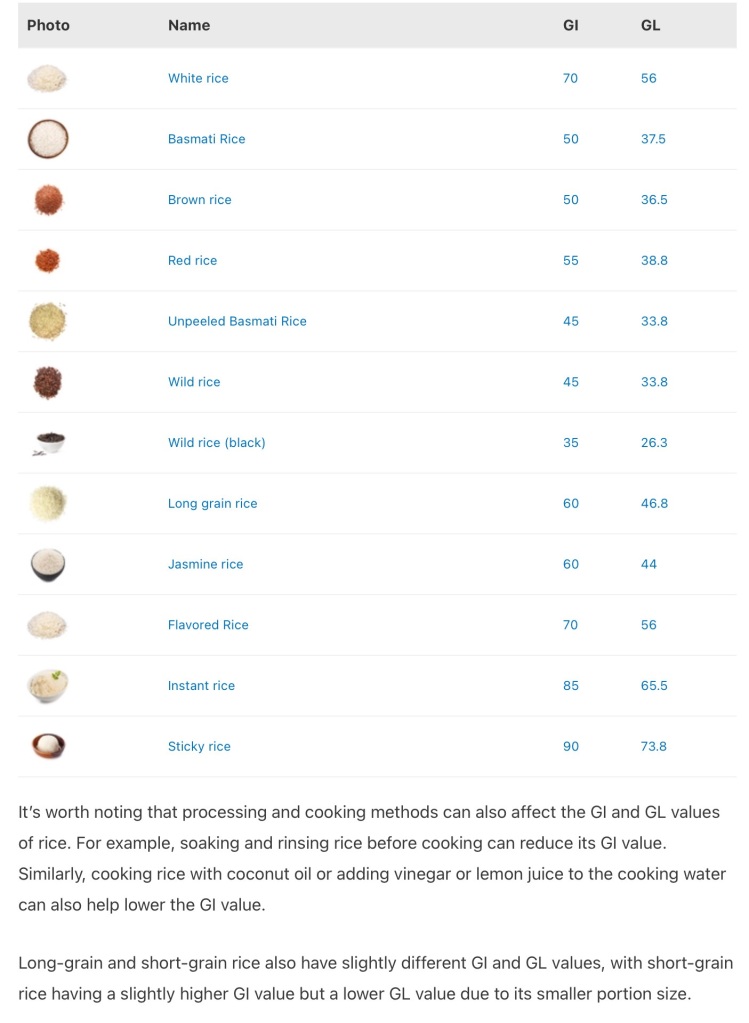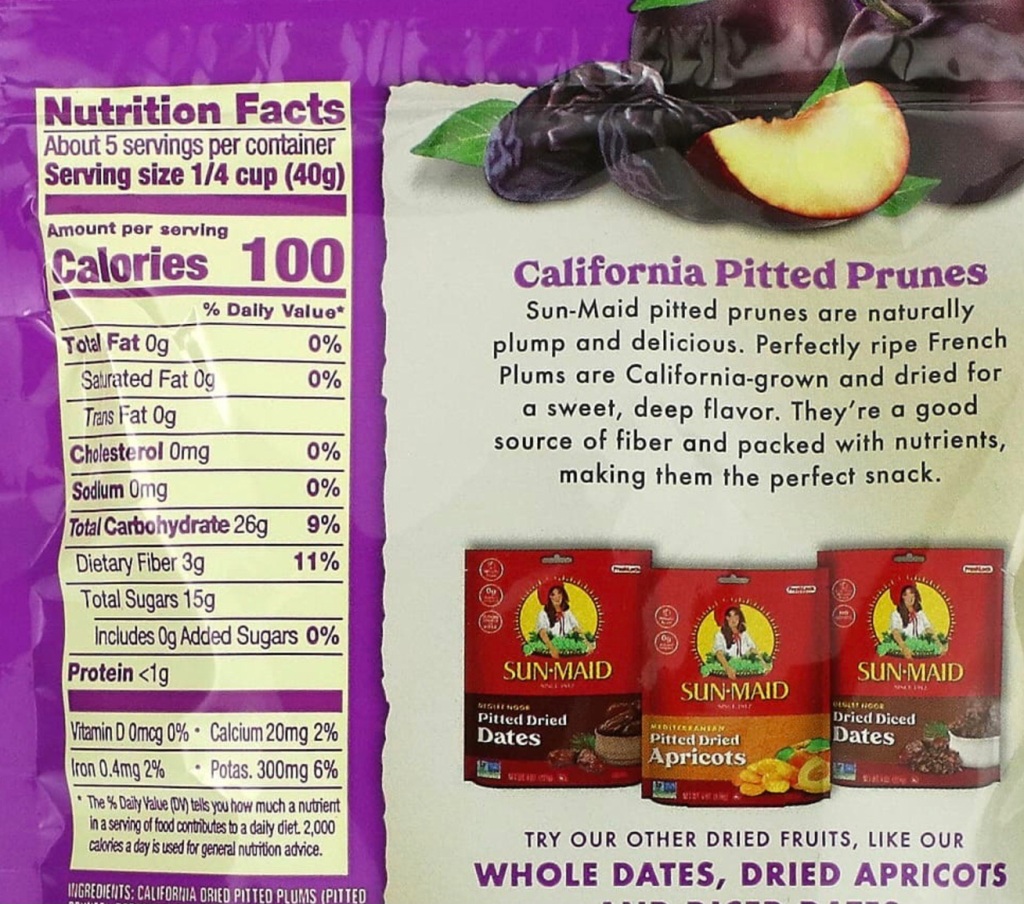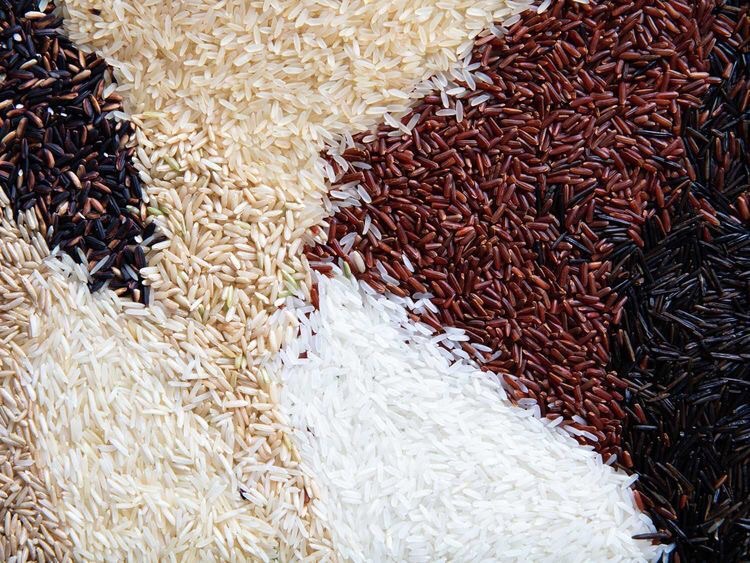
Rice, Rice, Baby! Oh, that isn’t how the song goes? As a person with prediabetes, rice rarely makes it onto my menu. Chinese and Spanish dishes are some of my favorite meals, so I really miss them. Rice is a dietary staple for over half the world’s population, so changing the way we cook it could help tackle obesity and other diet-related health problems.
Unfortunately, our usual choice of white rice has a high glycemic index, which means it raises the blood sugar readings two hours after eating and also can cause a swift dip soon after. This is because the way we usually cook rice and eat it prevents us from getting the benefit of resistant starch.

https://glycemic-index.net/glycemic-index-of-rice/
Resistant starch (RS) behaves more like dietary fibre than carbohydrate, as it is not broken down into simple sugars in the small intestine. There are several health benefits associated with resistant starch.
Resistant Starch is the starch which reaches the large intestine and then is fermented by bacteria. Therefore, RS is a type of fermentable fiber and could be considered one type of prebiotic, since it provides “food” for bacteria living in the large intestine. Fermentation of RS results in production of Short Chain Fatty Acids and a reduction in pH in the proximal large intestine.
Researchers using the traditional Sri Lankan cooking process as a starting point (40 minutes of simmering followed by oven drying for 2.5 hours), tested the effects of three other processing steps: adding coconut oil to the boiling water, refrigerating the rice for 12 hours before oven drying, and heating it up in a microwave after oven drying.
The results were interesting:
- Adding oil to the water created ‘type 5’ Resistant Starch. The oil complexes with the amylose to form amylose-lipid complexes…this prevents the starch granules being attacked by enzymes,’ says Sudhair James, from the College of Chemical Sciences in Sri Lanka.
- Chilling the rice after boiling increases ‘retrograded starch’ or ‘Type 3’ Resistant Starch when hydrogen bonds re-form within the starch, making some components less soluble.
- The team found that both these processes led to an increase in Resistant Starch, which reheating the rice after oven drying did not appear to reverse.
- In fact, the greatest effect, a 15-fold increase in Resistant Starch, was seen when all three treatments were used together. This translates to a calorie reduction of 10-12% in this particular variety, which James says could be ‘perhaps as high as 50 or 60%’ if the treatments were applied other varieties.
What we need to remember from this study is the metabolic response to food isn’t always predictable to what you get from an in vitro analysis. “We as humans are remarkable at protecting our food intake and will compensate,” says Diane Robertson from the University of Surrey, UK, who has carried out similar studies investigating the resistant starch content of pasta.
She also points out global cooking practices are variable. While some cultures may boil rice for a long time and then dry it, as in this study, many only cook it for 10-15 minutes, which might lead to a more modest result in increasing Resistant Starch and reducing calories.
Some claim only Coconut Oil added to white rice is the “secret magical ingredient” needed to reduce your blood sugar by increasing the resistant starch in cooked, cooled, and reheated rice. Any healthy oil or butter will do the same thing, but keeping the amount to a tablespoon or less is important. More than that will just add too many calories.

Resistant Starch acts like fiber because it’s digested in the lower colon, not in the small intestine. Consumption of resistant starch is associated with reduced abdominal fat and improved insulin sensitivity. Increased serum glucagon-like peptide 1 (GLP-1) likely plays a role in promoting these health benefits. In a recent study, participants typically received 10–60 grams of resistant starch per day. Health benefits were observed with a daily intake of at least 20 grams, but an intake as high as 45 grams per day was also considered safe.
We Americans typically get only about 5 grams of resistant starch each day, while some Europeans may get 3–6 grams, and the daily intake for Australians ranges from 3–9 grams. On the other hand, the average daily intake for Chinese people is almost 15 grams. Some rural South Africans may get 38 grams of resistant starch per day, according to a small study.

Resistant Starch is defined as the amount of starch that reaches the large intestine. Since the FDA does not allow the term “resistant starch” on food labels, another a purified RS product (Ingredion), Hi-maize 260, is assayed instead for fiber content. This amount can be placed on the food label as the fiber content. Therefore, keeping track of your daily fiber intake is a good equivalent for Resistant Starch. For adults up to age 50, women should get 25 grams of fiber daily and men should aim for 38 grams. Women and men older than 50 should have 21 and 30 daily grams of daily fiber respectively, since they usually have reduced caloric needs due to reduced activity. You can find this nutritional information on the food package or on the internet.
Fibrous vegetables, whole grain breads and pastas, old fashioned oats, nuts, beans, legumes, and potatoes that have been cooked, cooled, and reheated are all good sources of resistant starches. We only need to remember to keep our “dressings light” and not to “eat twice as much, since we’re being so healthy.”

I enjoy black, red, wild, and brown rice. Long grain or Jasmine rice is better than short grain or parboiled rice. I cook my white rice with a tablespoon of butter added to one cup rice and two cups rice with just a pinch of salt added. I use a small pot with a tight-fitting lid and turn the heat on high. When the pot begins to boil, I turn the heat to lowest possible. I give the rice a stir, replace the lid, and set a timer for 30 minutes. Somewhere near the 30 minutes, I can smell the fragrance of the rice. I check the doneness of the rice by lifting up the rice grains, not stirring. Depending on the humidity, the rice may take longer than 30 minutes to fully cook. Likewise, if it’s dry outside, it could cook faster.
Whole grain, wild, and colored rices also take longer time and need a tad more water to fully cook. All rices increase in resistant starch if they are cooled for at least 12 hours and reheated in the microwave. Let’s get more resistant starch in our diets by consuming foods high in the nutrient or by cooking other starchy foods and letting them cool before eating them. We can do this, for it will bring a good food back onto our menu.
A few important tips as you increase your fiber:
- Do so gradually to give your gastrointestinal tract time to adapt.
- Increase your water intake as you increase fiber.
- If you have any digestive problems, such as constipation, check with your physician before dramatically increasing your fiber consumption.
- Also, remember, going whole hog into a new lifestyle isn’t advisable for anyone. Couch to 5K programs begin with short walks and gradually add distance and speed. Changing eating habits should follow suit. Add a new fiber source in place of a low fiber food for a week. Next week, take out another low fiber food and add a higher fiber food.

In my youth, I would wash down a dozen Twinkie’s with a Diet Coke in the dark, while standing on one leg, for I was certain this magic trick eliminated all calories from those billowy sugar pills. Like most heavily processed food snacks, a single Twinkie contains about 140 calories and 23 grams of carbohydrates, contributing to 8% of our daily calorie allowance. This includes 16 grams of sugars and less than 1 gram of dietary fiber.
Now I’m not good at higher mathematics, but 12 of these sweet treats are an overdose if consumed at one sitting. If we were to eat these cake treats, we’d make sure to close both eyes because if we can’t see it, it obviously never happened!! (Magical thinking is an eight year old child trait.)
When I gave up caffeine for Lent one year, I suffered bad headaches from caffeine withdrawal. This was when I was younger and was given to the “all or nothing” approach to life. Now I’ve learned the hard way the body doesn’t appreciate such insults. Only the mad or reckless treat their bodies with disrespect or dishonor. We should honor our bodies, for we are temples of the Holy Spirit and images of the living God.

May you enjoy your food and know what you put into your body for better health and life.
Joy and peace,
Cornie
Simple cooking changes make healthier rice | Research | Chemistry World
https://www.chemistryworld.com/news/simple-cooking-changes-make-healthier-rice/8386.article?adre
Role of Resistant Starch in Improving Gut Health, Adiposity, and Insulin Resistance – Advances in Nutrition
https://advances.nutrition.org/article/S2161-8313(22)00641-X/fulltext
9 Foods That Are High in Resistant Starch: Oats, Rice & More
https://www.healthline.com/nutrition/9-foods-high-in-resistant-starch
The Glycemic Potential of White and Red Rice Affected by Oil Type and Time of Addition, by Bhupinder Kaur, Viren Ranawana, Ai-Ling Teh, and C Jeya.K Henry
Should I be eating more fiber? – Harvard Health
https://www.health.harvard.edu/blog/should-i-be-eating-more-fiber-2019022115927
Glycemic Index of Rice Types:
https://glycemic-index.net/glycemic-index-of-rice/
































































